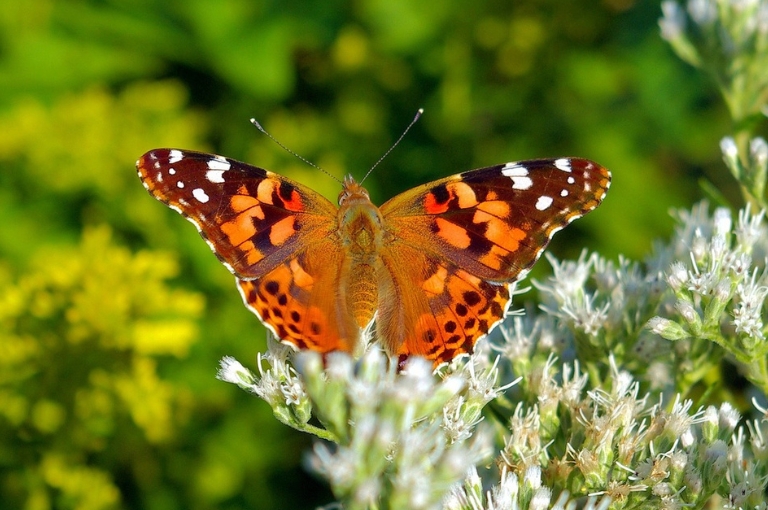
Few species communicate the story of wildlife migration on our continent more aptly than the Australian painted lady butterfly. This medium sized butterfly with elaborate pale orange, black and white markings, makes its annual journey to a predictable spring schedule, sometimes congregating in such vast numbers that they create an incredible aerial spectacle as they go.
First introduced to western science by Sir Frederick McCoy in 1868, the Australian painted lady (Vanessa kershawi) is closely related to others around the world and shares their penchant for lengthy, mass migrations. In Australia, the insect is widespread across our eastern states, South Australia and southwest WA, with Tasmania being occupied temporarily during more abundant years.
Their spring migration occurs during August and September when Australian painted ladies can be seen moving purposefully in a south to south westerly direction across a broad front that extends up to 580 kilometres inland from the coast.
Little is known about the specifics of the journey this resilient, yet delicate insect undertakes. But we do know that their particularly strong flight muscles enable them to fly over oceans, so they regularly reach islands off the Australian mainland during the migration season, and are even a frequent visitor to New Zealand.
Similar to the physical changes that take place in many birds ahead of their seasonal migrations, the Australian painted lady experiences a unique adaptation that equips them to make their long-distance travels. Caterpillars exposed to either mild temperatures (around 20oC) or hotter temperatures (30oC), like the conditions experienced in early spring and late summer, develop into adults with the lower body weight and stronger flight muscles needed to sustain a lengthy migration.
The number of butterflies making the journey varies from year to year depending on seasonal conditions, with higher than average winter rainfall resulting in larger numbers migrating. During the 1880s, regional newspapers spoke of days when rail lines had to be closed because the tracks were too slippery from the vast number of butterflies resting on them, and in 1889 they reportedly blackened the skies. Sadly, such mass migrations have not been recorded for some time, although larger migrations were seen in 1963 and more recently in 2017.
During the summer months, males occupy and defend prime female-attracting territories, perching on open ground on hilltops while awaiting passing mates. These tend to be short term occupancies though, with males able to hold onto prime spots for no more than three days before being replaced.
Despite being known to science for hundreds of years, the Australian painted lady is a species that is still only partially understood. A fleeting look at their seasonal behaviour highlights the richness of the movement stories that are continuously occurring around us. So, the next time you catch a flash of orange in the wind take a moment to reflect on this remarkable little insect’s grand journey and the connections it needs to make it.



 Blog
Blog